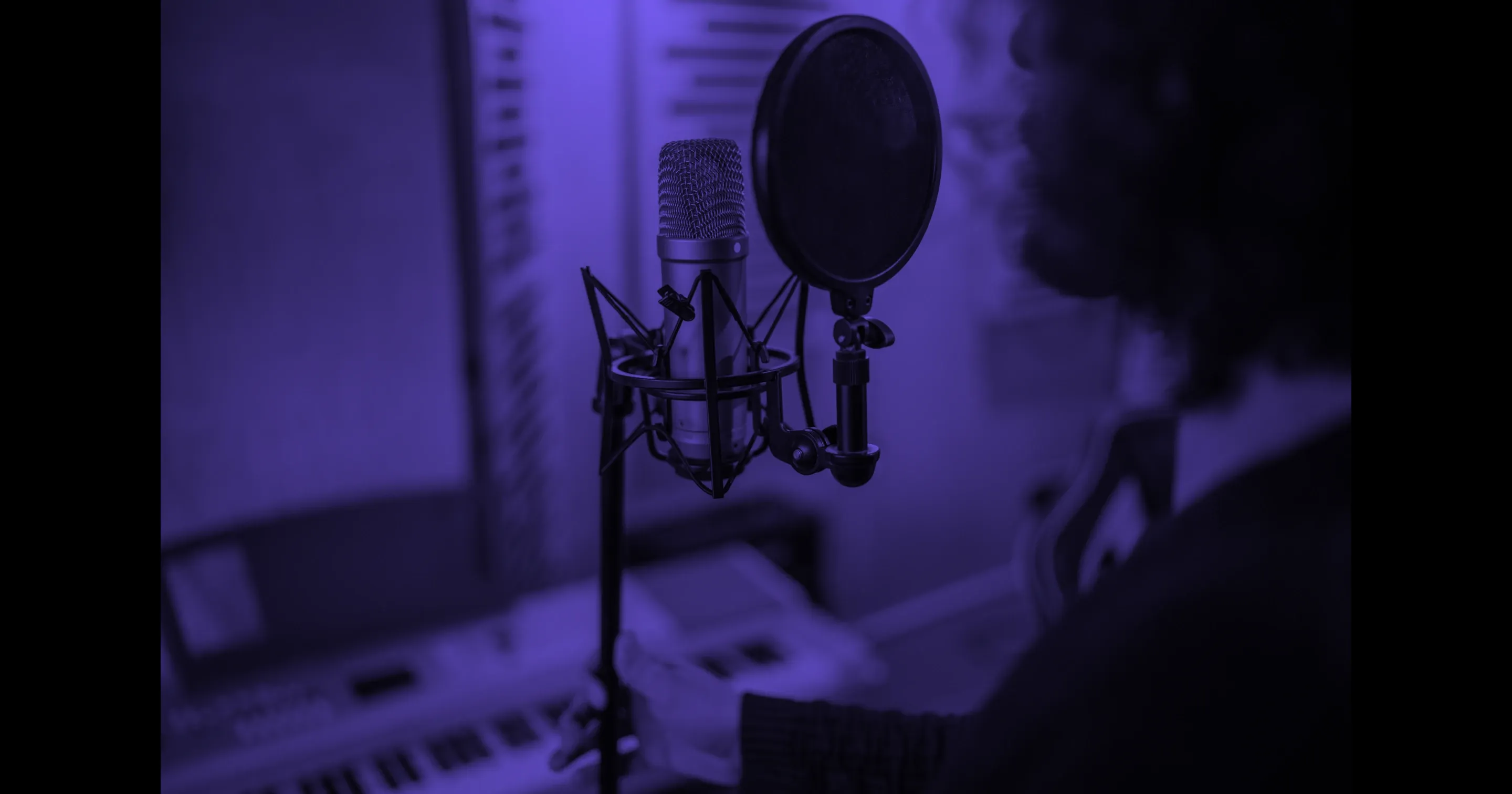
Record Better Vocals at Home: A Guide to Pop Filters in Music
Eliminate unwanted vocal pops and thumps in your vocal recordings. We explain how pop filters work, the different types (nylon, metal, foam), and what to consider for cleaner, professional vocal tracks.
Production
In the world of music production, capturing clean and professional-sounding vocal tracks is paramount. But even the most skilled vocalist can fall victim to a common audio nuisance: plosives. These small bursts of air can ruin an otherwise perfect take, leaving you with unwanted pops and thumps. Thankfully, there's a simple yet highly effective solution – the pop filter.
The Unsung Hero of Vocal Recordings
A pop filter, also known as a pop shield or pop screen, is a crucial tool when working with vocals. It's a protective screen placed in front of the microphone to minimize the impact of"plosives"– those disruptive bursts of air that can compromise your recording.
While we tend to focus on audio interfaces and microphones, we often overlook the pop filter in discussions about vocal recordings. A good pop filter is essential for achieving clear, professional-quality vocal tracks.
Understanding Plosives
So, what exactly are plosives? They are the consonant sounds that create a sudden release of air when pronounced. Common examples include the letters “p”, “b”, “t”, “d”, “k”, and “g”. Try saying the words"pop","baby", or"top"– you can feel the puff of air as these sounds leave your mouth.
When recording, this burst of air can hit the microphone diaphragm with significant force, causing a sudden change in pressure. This results in a low-frequency thump or pop in the audio signal, which can be distracting and unpleasant for the listener.
Plosives especially cause problems for sensitive condenser microphones, which people commonly use for vocal recordings due to their ability to capture detail and nuance.
How Pop Filters Work
Pop filters work by acting as a barrier between the vocalist's mouth and the microphone, effectively"taming"the airflow from plosives. They don't block sound waves; instead, they diffuse and redirect the burst of air, spreading it out so it doesn't hit the microphone with full force.
This minimizes the sudden pressure change that causes popping, resulting in a cleaner audio signal. In essence, pop filters act as a shock absorber for your microphone, protecting it from the harsh impact of plosives.
When comparing your mix to your reference track, these are small details that can prevent your music from sounding like the professional recordings.
Types of Pop Filters
There are several types of pop filters, each with its own characteristics.
Nylon Mesh Filters
These are the most common type of pop filter, consisting of one or two layers of tightly stretched nylon fabric over a circular frame.
Metal Mesh Filters
These filters use a fine metal mesh screen instead of nylon.
Foam Windscreens
These are foam covers that fit directly over the microphone.
Key Features to Consider For Your Pop Filter
When choosing a pop filter, consider these factors:
Best Pop Filters For Home Recording
Here are some of the top pop filters currently available, catering to various needs and budgets:
Stedman Proscreen XL
A professional-grade metal pop filter known for its exceptional performance and longevity.
sE Electronics Metal Pop Filter
A high-quality metal pop filter that offers a balance of performance and affordability.
Shure PS-6 Popper Stopper
A popular choice for both singing vocals and voiceovers, offering a good combination of quality and value.
Aokeo Professional Microphone Pop Filter
A budget-friendly option that's suitable for home studios and beginners.
Tips for Using a Pop Filter
To get the most out of your pop filter:
Conclusion: Protecting Your Sound
In the quest for pristine vocal recordings, a pop filter is a must-have tool. A budget-friendly option is a small investment that can make a significant difference in the quality of your audio, saving you from the frustration of ruined takes and countless hours of editing.
By effectively eliminating plosives, pop filters allow your vocals to shine through with clarity and impact. So, whether you're a seasoned professional or just starting, don't underestimate the power of this unsung hero of the recording studio.
Collaborate with Professional Musicians and Engineers in Real Time
Unlock your full music production potential with Musiversal. As a member, you'll gain access to 80+ professional musicians and engineers, unlimited recording and mixing sessions, and personalized advice or feedback sessions. Our Unlimited membership puts it all at your fingertips.
Hire the best session musicians for your songs—from drummers and cellists to guitarists, pianists, and beatmakers—all in one place. Schedule your live recording session at your convenience and collaborate in real-time through a dedicated link, witnessing your music come to life as you work directly with the musician.
If you're still developing your song, we also offer songwriting services, production consultations, and artist meet-and-greets to discuss your project and recording journey. Our engineers provide professional mixing and mastering services, ensuring your tracks sound polished and ready for streaming.
To help you expand your reach, we offer marketing sessions designed to get your music heard by a wider audience.
For valuable insights on music theory, songwriting, creativity, production, gear, marketing, and distribution, check out the weekly Musiversal Blog.
Your Music, No Limits.
Join the Waitlist